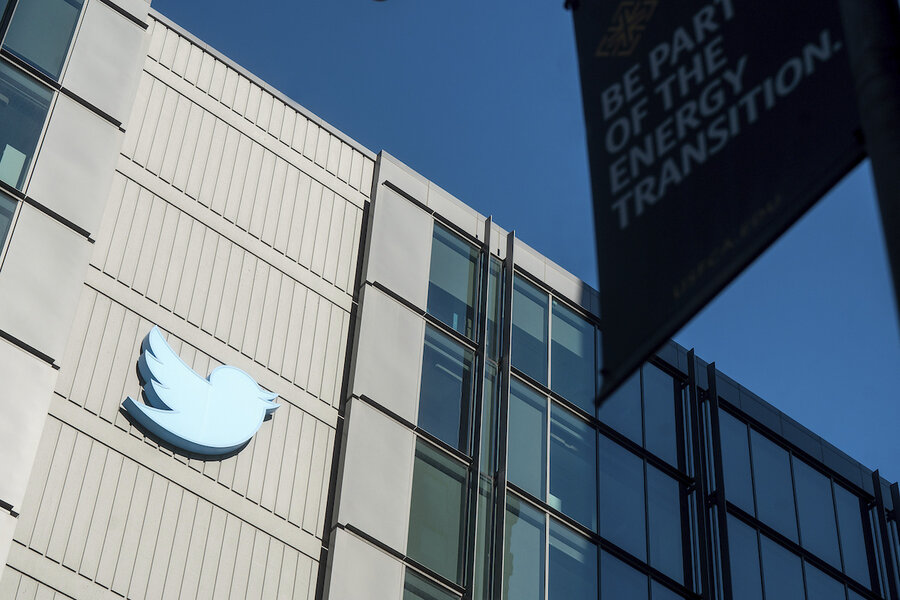Will Twitter remain a useful disaster planning tool under Musk?
Loading...
| Bangkok and Los Angeles
Days before the monsoon swept into Indonesia this year, 25 million people from across the country uploaded geotagged selfies on Twitter – their way of reporting for duty in a project to build a crowdsourced map of the impending floods.
The initiative by Indonesia’s Yayasan Peta Bencana – or Disaster Map Foundation – highlights Twitter’s role in disaster response around the world, from helping Indians access COVID-19 vaccines to sharing warnings about mass shootings in the United States.
It is a function some users fear could be at risk if the exodus of technical staff at the social media company under Elon Musk leads to service delays, or even crashes, on the platform.
“Twitter allows us to reach millions of people every day and gather crowdsourced information from people on the ground, who know the situation best,” said Nashin Mahtani, founder of Yayasan Peta Bencana, which has worked with Twitter for about a decade on real-time disaster mapping and response.
“With the changes in Twitter ... we hope for the best but are planning for the worst,” she said, adding that her organization’s real-time maps have been used by millions of residents, government agencies, and rescuers during emergencies.
With about 238 million active daily users, Twitter has proved to be a valuable disaster risk reduction and management tool, providing a way to share information, appeal for help – and even aid in recovery, research has shown.
But massive departures at Twitter’s engineering, technical assistance, and content moderation teams have users and technology experts worried that the platform’s infrastructure may wobble – or even stop working altogether – during a crisis, when large numbers of people use it.
“One thing that keeps me up at night right now is the possibility that Twitter’s potential death spiral will coincide with a major regional/national/global crisis,” Caroline Orr, a research associate at the University of Maryland, said in a tweet last week.
“For better or worse, Twitter is a crucial disaster comms tool, and we don’t have a replacement for it.”
A spokesperson for Twitter did not respond to a request for comment.
‘Very slow’
Users outside the U.S. have reported issues. Mr. Musk himself tweeted last week that “Twitter is very slow in India, Indonesia & many other countries,” wondering whether that was due to bandwidth, or a delay in the system or the app itself.
Those delays can mean life or death in emergency situations.
In Iran, Twitter has been the go-to platform to document protests and the crackdown on protesters since the death in September of a 22-year-old Kurdish woman, Mahsa Amini, in the custody of the country’s morality police.
“Twitter is extremely important for documenting the ongoing protests ... even though Twitter does not have a huge user base inside Iran,” said Amir Rashidi, director of digital rights at Texas-based Miaan Group, which supports human rights in Iran.
“I am worried about the changes in Twitter. We have witnessed a slowdown in response from Twitter ... that may have a negative effect for the Iranian people and the ongoing protests,” he said from Washington, D.C.
Twitter fired about half its 7,500 staff earlier, with reports of heavy cuts in regional headquarters including in Asia and Africa. Hundreds more employees are reported to have quit the company last week following a deadline from Mr. Musk that staffers sign up for “long hours at high intensity” or leave.
Mr. Musk’s plan for offering account verification for a fee – which has been postponed – is also worrying, as it may lead to the spread of more misinformation on Twitter, said Saeed Souzangar, chief executive of a technology firm in Tehran.
“The spread of misinformation on Iran is already so high on social media, and the fact that bad actors can get verified because they have paid is extremely worrisome,” he said.
“I am worried about what is going to happen to Twitter. I will be very upset if Twitter crashes, or if any data or video is taken down, as they document the timeline of events in Iran since the protests started,” he added.
‘Big blow’
In Indonesia, Ms. Mahtani said they also crowdsource reports from Facebook, Telegram, and Viber, and will soon be integrating their mapping tool with Instagram and WhatsApp as well.
But to members of the open source investigation community who use Twitter to examine war crimes and other rights violations, any disruptions to the site would be a “really big blow,” said Eliot Higgins, founder of investigative news outlet Bellingcat.
“It’s allowed people to share evidence they’ve captured themselves or uncovered, and it’s allowed people to find that information and coordinate – in mostly an ad hoc way – to examine that evidence,” he said.
“It meant incidents that would have otherwise been ignored ended up being investigated.”
Bellingcat’s Ukraine civilian harm map, for example, has used geolocated videos and photographs from Twitter users during the ongoing conflict.
There are concerns around these users being exposed if the platform collapses, and about the security of private data – in particular, the risk of direct messages being hacked or leaked, which could expose activists to “very serious risk,” Mr. Higgins said.
Mr. Higgins, like Ms. Mahtani, is also looking to reduce Bellingcat’s dependence on Twitter, and is trying to expand its presence on other social media sites and bring more people to its Discord server, where they can post messages, images, videos, and files – though it will not be the same, he said.
“I don’t think they’ll ever really replicate what has made Twitter so useful for open source investigation communities, and those people collecting and sharing evidence.”
This story was reported by the Thomson Reuters Foundation.





